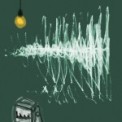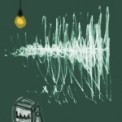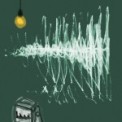-
History & Society
- Education in Pre-war Hong Kong
- History of Taikoo Sugar Refinery
- Hong Kong Products Exhibition
- Local Festivals Around the Year
- Post-war Industries
- Pre-war Industry
- The Hong Kong Jockey Club Archives
- Tin Hau Festival
- Memories We Share: Hong Kong in the 1960s and 1970s
- History in Miniature: The 150th Anniversary of Stamp Issuance in Hong Kong
- A Partnership with the People: KAAA and Post-war Agricultural Hong Kong
- The Oral Legacies (I) - Intangible Cultural Heritage of Hong Kong
- Hong Kong Currency
- Hong Kong, Benevolent City: Tung Wah and the Growth of Chinese Communities
- The Oral Legacies Series II: the Representative List of the Intangible Cultural Heritage of Hong Kong
- Braving the Storm: Hong Kong under Japanese Occupation
- A Century of Fashion: Hong Kong Cheongsam Story
Geography & EnvironmentArt & Culture- Calendar Posters of Kwan Wai-nung
- Festival of Hong Kong
- Ho Sau: Poetic Photography of Daily Life
- Hong Kong Cemetery
- Sketches by Kong Kai-ming
- The Culture of Bamboo Scaffolding
- The Legend of Silk and Wood: A Hong Kong Qin Story
- Journeys of Leung Ping Kwan
- From Soya Bean Milk To Pu'er Tea
- Applauding Hong Kong Pop Legend: Roman Tam
- 他 FASHION 傳奇 EDDIE LAU 她 IMAGE 百變 劉培基
- A Eulogy of Hong Kong Landscape in Painting: The Art of Huang Bore
- Imprint of the Heart: Artistic Journey of Huang Xinbo
- Porcelain and Painting
- A Voice for the Ages, a Master of his Art – A Tribute to Lam Kar Sing
- Memories of Renowned Lyricist: Richard Lam Chun Keung's Manuscripts
- Seal Carving in Lingnan
- Literary Giant - Jin Yong and Louis Cha
Communication & Media- Hong Kong Historical Postcards
- Shaw Brothers’ Movies
- Transcending Space and Time – Early Cinematic Experience of Hong Kong
- Remembrance of the Avant-Garde: Archival Camera Collection
- Down Memory Lane: Movie Theatres of the Olden Days
- 90 Years of Public Service Broadcasting in Hong Kong
- Multifarious Arrays of Weaponry in Hong Kong Cinema
-
History & SocietyGeography & EnvironmentArt & Culture
-
View Oral History RecordsFeatured StoriesAbout Hong Kong Voices
-
Hong Kong Memory
- Collection
- All Items
- Oral History
Recently VisitedOral History

- Earlier operation of Globe Dyeing Factory Ltd, its factory on Castle Peak Road, and development a...
In the early days of Globe Dyeing Factory, Ha Chung Fong was responsible for soliciting orders from clients and Lap Shun Textiles was his first client. His company would handle the dyeing process for his clients. In 1980s, his company expanded to weaving business. When the company first started, the factory was at Ka Ming Court, which was at 690 Castle Peak Road, Cheung Sha Wan. The building was just opposite to Hong Kong Spinners. The factory of Globe Dyeing was a mere 7500 square feet, very small compared to the company's factory in mainland China now which has over several million square feet of space. Rent was relative cheap at the industrial building on Castle Peak Road, and it was also close to Ha's clients. At that time, Lap Shun Textiles was on the 2nd floor while Globe Dyeing was on the 4th floor. During that time, a lot of garment and dyeing factories were located in area around Castle Peak Road and Hai Tan Street in Sham Shui Po. They were mostly small factories and some would be inside walk-up buildings. In 1970, Ha moved his factory to Tsai Wan Kok Street (i.e. 9 Milestone), Tsuen Wan. There were other large spinners such as South Sea Textile and Nan Fung Textile.
The plant at Castle Peak Road only had simple facilities. It had two US-made steamers which cost HK$75,000. Other machines were assembled by Ha with various components. In 1989, Ha raised enough capital and built an industrial building in Tuen Mun for his Lake Side Printing Factory, and began printing and dyeing business. The factory had its own sewage facilities. Ha said he is now 72 years old. His textile career was full of challenges.

- Expansion of Globe Dyeing Factory (1): woven towels and velour, factory relocation.
In the 1980s, when Ha Chung Fong started Lake Side Printing Factory in Tuen Mun, the company had expanded to producing velour. Velour was a mixed fabric produced with the similar technique as knitting. Towel cloth was one of its products. Towel cloth could be weaved or knitted. Ha's factory was among the first generation of towel cloth producers. He continuously tried to improve the quality of his velour towel cloth. He realized cloth for towels could keep one warm, so he thought it was suitable for making pajamas, children's clothes and sportswear, etc. Ha had gained much of his experience of running factories from self exploration, but to be able to solve them gave him much satisfaction. When starting his business, the hardest moment was that he had to work with his workers to catch up deadlines when only a few of them were willing to work overtime on Sundays. He sacrificed his free time, as well as time for his family. He sometimes had to sleep on rolls of fabrics in the evenings.
In 1969, Ha Chung Fong founded his first company, Globe Dyeing Factory. It was located on 4th floor of Ka Ming Court at 690 Castle Peak Road. The factory specialized in dyeing for the garment factories. At first it could only handle single color dyeing. In 1970, his factory was moved to Tsai Wan Kok Street, Tsuen Wan. Apart from dyeing, it also expanded into weaving. During the first and second year it was only in nylon weaving. Later it expanded to include synthetic fibre and cotton. Around 1979 to 1980 the factory moved to Tuen Mun, renting space at Tin's Centre Industrial Building Block 9. Later he purchased several units in the building in different stages, eventually had up to 200,000 square feet of floor space. The factory was then in weaving towel cloth, dyeing and yarn dyeing. In 1989, he received loans from his bank for the expansion of his factory. Ha said banks were like providing parents to an industrialist.

- Expansion of Globe Dyeing Factory (2): garments, knitted fabrics and printing business.
Ha believed a successful textile business should also include garment manufacturing. He cited Marjorie Yang as an example. Marjorie Yang is the daughter of Yang Yuan Long, founder of Esquel Textile Ltd. Marjorie Yang has been more successful than his father. She expanded the company's business into a vertical set-up. Apart from printing, it also included cotton supply, weaving and knitting, garments and dyeing. In 1980, Ha Chung Fong founded a factory in Yuen Long's Tong Yan San Tsuen specialized in fabric printing. After the establishment of Lake Side Printing Factory in 1998, Ha once again expanded into fabric printing business.
Ha tried garment manufacturing, and established his own brand, but the market was not so receptive to his products. He believed fabrics has a very close relationship with fashion trend. Knitted fabrics are easy to worn out but they are not without merits. Knitted fabrics are useful for producing female, children's sports clothes and baby clothes. These days’ knitted fabrics are more common in the market than woven fabrics. In the beginning, Ha's factory took dyeing business from larger garment factories. Later while continuing his dyeing business, he also expanded to knitting and selling fabrics. In the early days Globe Dyeing Factory's produced knitted towel cloth which was first sold to Law's Textile and Sunrise Knitting Factory.
Ha divided his knitting business into two sections: one was designing his own fabrics and sold them to his clients, the other was knitting fabrics according to clients' specifications. Currently Ha hires two specialists holding doctor's degree in textile, one from the mainland and one from Hong Kong Polytechnics. Together with a 70-strong research and development team, they study and develop new fabrics for Fountain Set (Holdings) Ltd. The company's R and D department was set up over 20 years ago. It began its work when the company had its factory in Tuen Mun. The company's printing section also engaged in RandD. The process of printing was more complicated. Different kinds of dyes were used for fabric printing and so it required a strong management team to oversee the business.
Ha Chung Fong started his printing business. In 1996 Ha established his dyeing and printing facilities in Sri Lanka. Although workers would gain experience from their daily work, Ha also hired a professor of textile from Hong Kong Polytechnics to assist in his business. While in Hong Kong, at the time when he was running Lake Side Printing Factory, Ha hired apprentices in printing so they could learn and practice at the same time. Normally a dyeing factory would start with the color red. Ha mentioned because of his lack of experience, his first batch of red dyed fabrics was not a success. During the 1980s, at his factory in Tong Yan San Tsuen, he had not started hiring graduates from Hong Kong Polytechnics so he only hired technicians instead.
Copyright © 2012 Hong Kong Memory. All rights reserved.
| Set Name |





